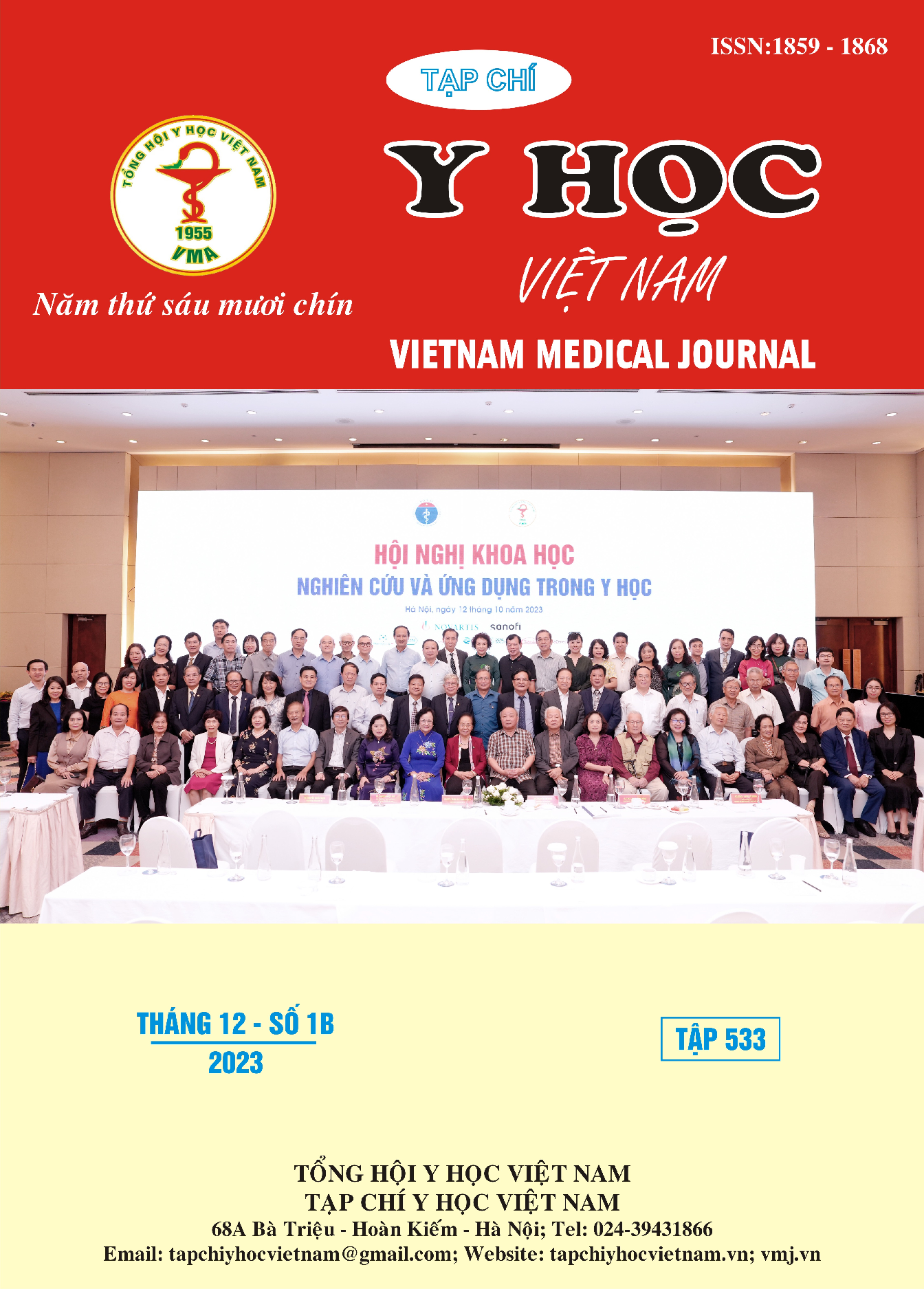RESULTS OF RE-ENDOVASCULAR INTERVENTION FOR TYPE 1B ENDOLEAKS IN PATIENTS WITH ENDOVASCULAR ABDOMINAL AORTIC ANEURYSM
Main Article Content
Abstract
Background: Endovascular abdominal aortic aneurysm (EVAR) treatment is a standard and fighting open surgery. Endoleaks of complications after aneurysm treatment are encountered in 15-21% of cases[1],[2]. Most are resolved by endovascular intervention to prevent blood flow into the aneurysm, causing enlargement and later rupture. Type 1B endoleaks are seen in cases where the blood goes out into the sac at the distal landing zones of the stent graft. The reintervention alone or combined with occlusion with the coil, amplatzer, or branched devices is still attractive to many authors. Methods: Retrospective description of case series. Results: The study involved participants with an average age of 70.4 ± 8.2 years, mostly male. Hypertension and smoking were the most common risk factors, accounting for 93.3% and 73.3% of the sample, respectively. Among the risk factors for type 1B endoleaks, a short iliac sealing zone and tortuosity iliac axes were the most prevalent, accounting for 66.7% and 93.3% of the sample, respectively. Using a cover stent with internal iliac artery blockage accounted for 53.3% of cases while using a cover stent alone accounted for 33.3%. The technical success rate was 100%, with only 6.7% of complications recorded as hematoma and 13.3% as acute renal failure. During the follow-up period, the rate of no endoleak recurrence reached 86.7% of the sample. Conclusion: The study shows that re-intervention to treat type 1B endoleaks in patients with EVAR of abdominal aortic aneurysm is performed safely and effectively, with few complications and low recurrence.
Article Details
References
2. Faries PL, Brener BJ, Connelly TL, Katzen BT, Briggs VL, et al. A multicenter experience with the Talent endovascular graft for the treat- ment of abdominal aortic aneurysms. J Vasc Surg 2002;35:1123-8.
3. Zaiem F, Almasri J, Tello M, Prokop LJ, Chaikof EL, Murad MH (2018) A systematic review of surveillance after endovascular aortic repair. J Vasc Surg 67(1):320-331.e37
4. Bianchini Massoni C, Perini P, Tecchio T, Azzarone M, de Troia A, Freyrie A. A systematic review of treatment modalities and out- comes of type Ib endoleak after endovascular abdominal aneu- rysm repair. Vascular 2018;26(01):90–98
5. Gaffey AC, Damrauer SM. Evolving Concepts, Management, and Treatment of Type 1 Endoleaks after Endovascular Aneurysm Repair. Semin Intervent Radiol. 2020 Oct;37(4):395-404.
6. Coulston J, Baigent A, Selvachandran H, Jones S, Torella F, Fisher R. The impact of endovascular aneurysm repair on aortoiliac tortu- osity and its use as a predictor of iliac limb complications. J Vasc Surg 2014;60:585–589
7. Schlosser FJ, Gusberg RJ, Dardik A, Lin PH, Verhagen HJ, Moll FL, et al. Aneurysm rupture after EVAR: can the ultimate failure be predicted? Eur J Vasc Endovasc Surg 2009;37:15e22.
8. Fransen GA, Vallabhaneni Sr SR, van Marrewijk CJ, Laheij RJ, Harris PL, Buth J. Rupture of infra-renal aortic aneurysm after endovascular repair: a series from EUROSTAR registry. Eur J Vasc Endovasc Surg 2003;26:487e93.
9. Bianchini Massoni C, Perini P, Tecchio T, Azzarone M, de Troia A, Freyrie A. A systematic review of treatment modalities and outcomes of type Ib endoleak after endovascular abdominal aneurysm repair. Vascular. 2018;26(01):90–98
10. Qazi AA, Jaberi A, Mironov O, et al. Conservative management of type 1A endoleaks at completion angiogram in endovascular repair of infra-renal abdominal aortic aneurysms with current generation stent grafts. Vascular 2019;27(02):168–174.


